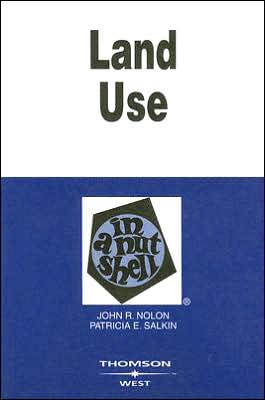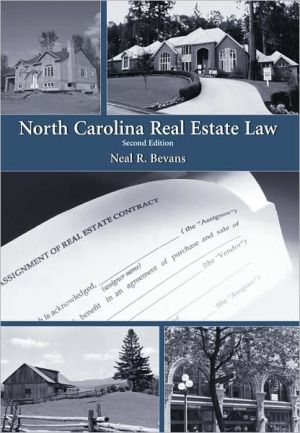Losing Ground: A Nation on Edge
America builds on the edge of disaster prone areas: on moveable barrier islands, fragile coastal ecosystems, shorelines subject to inundation, and next to flammable forests. Ferocious storm events focus local and national attention in the tragic moment and during short-term recovery efforts; then, too often, we return to business as usual, continuing to build and rebuild on the edge. Losing Ground provides effective perspectives and prescriptions for longer-term disaster...
Search in google:
This book calls attention to the emerging issues involved in building on the edge of environmentally vulnerable places, explores why we do this, and proposes ways to mitigate its impact. The challenge of public policy is to acknowledge–and challenge–the conflicts inherent in modern planning philosophy, in the service of sensible environmental regulation.
Losing Ground: A Nation on Edge\ Virtual Preface Disasters come in two terrible flavors. There are the ones we produce all on our own like train wrecks and 9-11s, and for these we are at least ready to accept and assign the blame. The other ones, floods and forest fires come to mind, we tend to blame on Mother Nature and look for ways to tame the beast so that they will not come again. In this, we greatly err. Most natural disasters, too, are man made; they were going to come, we just got into their way, and we keep on going back in their way, every time. The root question of this book is whether we have the will and the institutions to respond differently in the future. The answer is in doubt but the good news is that, when the results get sufficiently awful, we have a shot at change. I am writing this preface from the City of New Orleans, which will be trying to recover from Hurricanes Katrina and Rita for many years, if it can recover at all. Long protected by a levee system, there is no doubt that the city drowned because of an almost Alice in Wonderland series of human blunders from top to bottom. It is also true, however, that the city and its surrounding parishes had boomed out aggressively onto subsiding swamps and wetlands with ground-level, on-slab development that flooded even during moderate rains, depended on aging drainage systems, and thumbed its nose at even the modest requirements of the national flood insurance program. Year after year the state of Louisiana, spearheaded by New Orleans and its neighbors, led the nation in recurring flood losses. Now they do, without rival, by at least one order of magnitude. The recent hurricanes, like a string of high-powered Gulf and Atlantic coast storms before them, also pounded barrier island and beach front development where no sane parent would allow a child to live, sand castles on the sea. Yet, this is some of the most expensive real estate in the United States. It is also some of the most heavily subsidized real estate in the United States, starting with the second home mortgage deduction and moving on to flood insurance, sea walls, beach nourishment, sewage treatment plants and access bridges and highways. One of the many victims of Hurricanes Katrina and Rita was the community of Grande Isle, Louisiana. I recently calculated the federal benefits on the island at over $1 million per permanent resident. Following the storm, former Grand Isle residents stand by the remnants of their piers and slabs and announce their intention to rebuild. Why not? We will all pay for it. Perhaps, the most striking aspect of the post Katrina Gulf Coast, from Alabama to Texas, is the rush to rebuild in exactly the same places, a few feet back, a few feet higher, more high priced investment than ever before. Two lane bridges are replaced by six lane bridges. Modest beach homes are replaced by condominiums. The hurricane has led to a construction boom. As the Gross National Product measures these things, the hurricanes were a huge success. What is wrong with this picture?\ To be fair, we could as easily be talking about those rugged individuals who build ever deeper into public forests and then clamor for extensive clearing to reduce the risk from forest fires. Actually, the forests do quite well with forest fires; indeed most depend on them for their ecological balance and survival. We are the ones with the problem. We could also as easily be talking about the chronic waves of housing on the muddy cliffs of California, which tumble after heavy rains onto roadways and, occasionally, into the Pacific Ocean. Who would have thought? Another natural disaster, to be sure. The fact is, most natural disasters are not about hurricanes, or fires, or mudslides. They are about us. The problem is that we are not prepared to deal with the overwhelming pressure to build in high risk, disaster prone places. To the contrary, we facilitate and subsidize it. The house on the cliff, the place on the beach, they are not just part of the American dream, they are The Prize. On the other hand, from time to time we recognize the insanity of tempting fate so directly, and so, over time, we have enacted federal programs to anticipate and prevent disasters in the disaster zone. These programs include the look-ahead impact assessment requirements of the National Environmental Policy Act, the rational planning model of the Coastal Zone Management Act and the flood protection requirements of the National Flood Insurance Program. They have been overmatched for years, but Hurricanes Katrina and Rita showed us just how badly. It is now clear that no environmental assessment conducted for the New Orleans levee system or for several projects that aggravated the impacts of these storms, most notably a major canal leading directly into the city, even mentioned the scenario of a larger-than-expected hurricane, right on target. No coastal management program on the Gulf Coast sought to impose any hurricane related requirements on beachfront development beyond those of the flood insurance program and, indeed, the Mississippi program required the location of its casinos on the beach itself; these buildings wound up hundreds of yards inland, in pieces.The flood insurance program, compromised by local political pressures, relied on antiquated flood maps and on modest building elevation requirements, as if elevations were the answer to hurricane force surges thirty feet high. We have programs. They failed. There is one response that does not fail. Give the disaster some space. If humans are not living in there, the forest fire will kill no one. And if humans are not living on the beach or on the banks of the Mississippi River, no one will drown. They may get wet. High winds make take off their roof tops. But they will live. Nature’s fatal-hit zone is not all that extensive. But the real estate it embraces is, or has been until this moment, too tempting to leave alone. One could imagine a thriving mountain community that stayed out of the woods, and an equally thriving coastline with no permanent structures at the edge of the sea. One could imagine the next hurricanes Katrina and Rita passing without massive losses of life and property. The question is whether we can do more than imagine them.\ I am not sure. But I am going to read this book and see what others think. It is a serious question for our time, not only in the United States but in post-tsunami Indonesia, post-volcano Peru and on every continent of the world, every year. Emergency responses come a bit late in the day for these kinds of catastrophes. So, what are the other options? Oliver A. Houck Professor of Law Tulane University Tulane 2006







